What Is Mass-Loaded Vinyl for Soundproofing
In the world of soundproofing, few materials have earned the same reputation as mass-loaded vinyl. It’s dense, flexible, and surprisingly effective at blocking noise without taking up much space. At New York Soundproofing, we’ve used MLV in countless residential and commercial projects across the city — from luxury condos in Manhattan to recording studios in Brooklyn. What makes it so special is how it balances science with practicality.
Understanding Mass Loaded Vinyl Basics
Let’s start with the essentials. What is mass-loaded vinyl? In simple terms, it’s a heavy yet flexible material designed to reduce sound transmission. Imagine a thick, rubber-like sheet that adds mass to a wall, ceiling, or floor without needing to tear down your structure. The concept is simple: more mass means less sound passes through.
When properly installed, MLV works as a barrier that stops sound vibrations from moving through drywall or other building surfaces. It’s especially effective against airborne noises — think traffic outside, loud music, or a TV in the next room. Its flexibility also helps it adapt to irregular surfaces, which makes it a favorite choice among professional installers.
Unlike rigid panels or foam, mass-loaded vinyl doesn’t absorb sound — it blocks it. That distinction is key. Absorbers handle echoes inside a room, but blockers keep unwanted sound from entering or escaping. If your goal is true privacy or quiet, you need both, and MLV plays a central role in the blocking category.
What Mass Loaded Vinyl Is Made Of
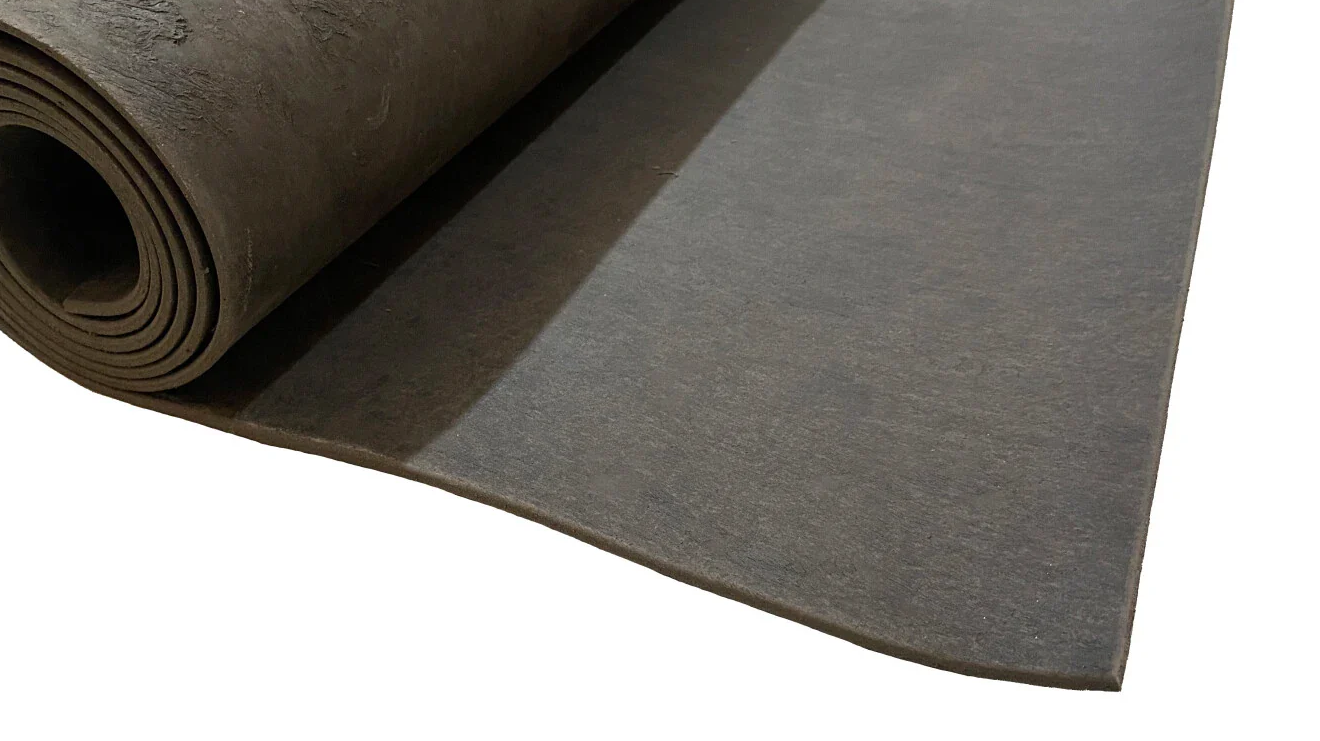
Now, what gives this material its incredible density? That’s where the science comes in.
The Core Materials Behind MLV
If you’ve ever wondered what mass-loaded vinyl is made of, here’s the short answer: it’s typically composed of polyvinyl chloride (PVC) combined with dense additives like calcium carbonate or barium sulfate. This combination gives the vinyl its “mass-loaded” properties — heavy enough to block noise, yet flexible enough to handle easily during installation.
PVC provides structure and durability. The additives give it weight. When fused together, they create a sheet material that feels like a cross between thick rubber and industrial vinyl flooring. It’s tough, tear-resistant, and performs well even in extreme temperature conditions.
How the Composition Creates Sound-Blocking Power
The science behind it is surprisingly elegant. Sound travels as vibration, and heavy, limp materials like MLV disrupt that movement. The weight resists airborne vibration, while its flexible surface dissipates the energy instead of passing it along.
That’s why even a single layer can make a noticeable difference. Add it between drywall layers, under flooring, or behind acoustic panels, and you immediately reduce sound transmission. MLV is also non-porous, meaning air can’t move through it easily — another reason it’s so effective.
At New York Soundproofing, we often combine MLV with resilient channels or double-stud walls for maximum performance. When installed correctly, it helps clients achieve a level of quiet that feels luxurious, even in the heart of the city.
Common Applications Where Mass-Loaded Vinyl Shines
MLV is versatile, but it isn’t a cure-all. It excels at blocking airborne noise and works best as part of a layered system. Here’s where it truly delivers in New York apartments, brownstones, offices, and hospitality spaces.
Party Walls and Ceilings
Our most common use case. We attach MLV over studs or over existing drywall, then add a new gypsum layer with acoustic sealant at the perimeter. This adds mass and closes flanking paths, which cuts voices, TV, and street rumble. On ceilings, MLV sits between drywall layers or over furring to reduce transmission from rooms above. It is not a replacement for decoupling, yet it boosts an assembly’s performance without major loss of space.
Floors
MLV helps with airborne transfer between units, especially when sound leaks through plank seams or ceiling cavities. For footfall and other impact noise, we pair it with a true impact-isolation underlayment such as rubber, cork, or engineered sound mats. Standard MLV alone does not create a “floating” floor. When you need both mass and cushion, we use barrier-plus-foam composites or a full floated system.
Doors and Openings
Hollow-core doors are weak points. We add MLV as a limp-mass layer behind a new skin or recommend upgrading to a solid-core slab with perimeter seals and a drop bottom. For media rooms and conference spaces, this door package plus MLV in the wall turns a leaky opening into a controlled boundary. Window plugs can also incorporate MLV for removable, high-mass inserts where full glazing upgrades aren’t feasible.
Mechanical and HVAC Areas
Noise from fans and ducts is common, but fire and code rules matter. We use MLV barrier jackets or foil-faced, fire-rated composites around ducts and mechanical enclosures, keeping clearances and access intact. We never block airflow, grills, or service panels. In many cases, we combine an internal duct liner for absorption with an external MLV wrap for transmission loss. When plenum ratings are required, we specify rated materials only.
Commercial Interiors
Restaurants, clinics, fitness studios, and offices need privacy and compliance. MLV integrates behind new finishes without changing the design intent. It’s thin, cuts sound bleed between rooms, and helps meet speech privacy targets in meeting spaces. In mixed-use buildings, we often line demising walls and ceilings that sit under residences to keep the peace above.
Specialty Uses
Elevator machine rooms, equipment closets, and recording spaces benefit from targeted MLV layers combined with isolation clips, mineral wool, and sealed penetrations. For studios and home theaters, we use MLV for mass, absorptive batts for control inside the cavity, and strategic decoupling where structure-borne energy is the issue.
How MLV Compares to Other Soundproofing Materials
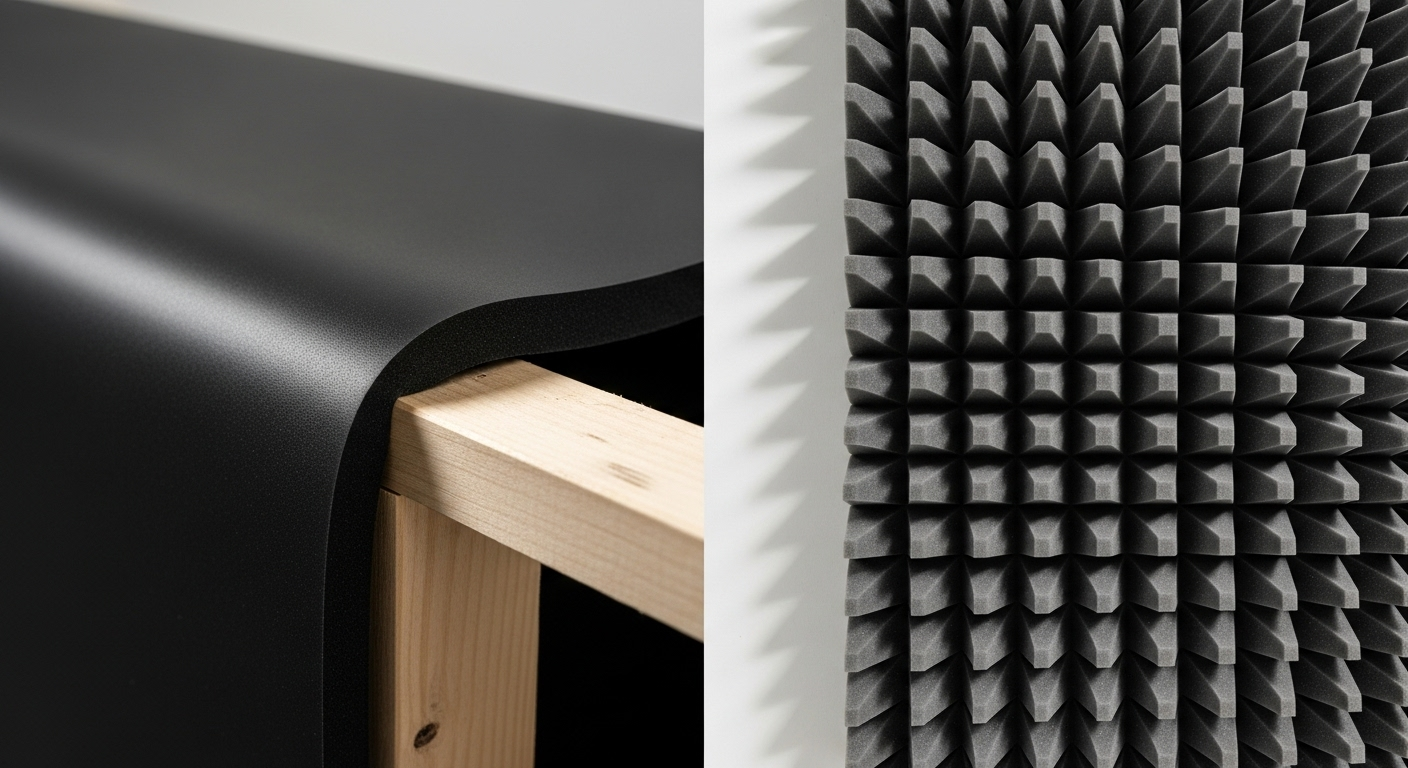
Many clients ask how mass loaded vinyl (MLV) stacks up against foam, fiberglass, or other acoustic solutions. The short answer: it plays a different role. Acoustic foam and panels are designed to absorb sound reflections and improve the way a room sounds. MLV, on the other hand, stops sound from traveling through walls, ceilings, or floors. It’s a sound barrier, not a sound absorber.
MLV vs. Acoustic Foam and Panels
Acoustic foam is great for treating echo, reverb, and flutter inside a space. You’ll see it in recording studios, podcast rooms, or offices that need better internal acoustics. But foam is light — too light to block airborne noise from another room or from outside. That’s where MLV comes in. It adds mass and density, preventing sound from passing through in the first place. When used together, MLV and foam complement each other perfectly: MLV blocks the noise, and foam refines the sound quality inside.
MLV vs. Drywall and Soundproof Drywall
Compared to standard drywall, MLV offers a major improvement in noise isolation. Traditional soundproof drywall can perform well, but it’s heavy, costly, and harder to modify once installed. MLV provides similar sound-blocking results in a thinner and more flexible form. It can be cut with a utility knife, bent around corners, or applied in layers without major reconstruction.
In many renovation projects we handle at New York Soundproofing, MLV is the go-to solution when clients can’t afford to rebuild walls. Adding one layer of vinyl behind existing drywall often yields dramatic results — especially in apartments and condos where construction limitations exist.
MLV vs. Mineral Wool and Fiberglass
Mineral wool and fiberglass insulation are excellent absorbers. They trap sound waves within their fibers, reducing echo and improving acoustics. But they don’t offer much mass, which means they can’t stop sound from passing through walls on their own. That’s where MLV truly shines — it provides the missing density needed for real isolation.
By pairing MLV with fiberglass or mineral wool, you get the best of both worlds: absorption and mass. This layered system stops airborne noise while preventing resonance and echo. It’s a favorite approach for home theaters, offices, and recording studios where both clarity and privacy matter.
Why Professionals Prefer MLV
It’s the versatility that makes MLV a favorite among architects, builders, and sound engineers. It integrates effortlessly into different designs — walls, ceilings, floors, even doors — without adding much thickness or complexity. For urban environments like New York City, where space and quiet are both premium, that combination is unbeatable.
Installation Considerations for Mass-Loaded Vinyl
Installing MLV is straightforward but requires attention to detail. It comes in rolls, usually four to six feet wide. The material is heavy, so it’s best handled with care and ideally by two people for larger projects.
We typically attach it directly to studs or existing drywall using acoustic sealant and screws with large washers. The seams are overlapped or sealed with special tape to prevent sound leaks. Even small gaps can compromise performance, so precision matters.
When installed under floors, MLV acts as a barrier layer beneath carpet padding, vinyl planks, or hardwood. On ceilings, it’s placed between drywall layers to reduce footstep noise from above. Its flexibility also allows installers to wrap corners, pipes, and irregular surfaces with ease — something rigid materials can’t do.
For optimal results, we always recommend professional installation. A single mistake, like leaving an open seam or forgetting to seal an outlet, can drastically reduce soundproofing effectiveness.
Real Results with Mass Loaded Vinyl
At New York Soundproofing, we’ve seen firsthand how MLV transforms noisy spaces into quiet sanctuaries. In one Brooklyn loft conversion, residents complained about the constant traffic rumble from the bridge nearby. After applying MLV behind their drywall and under the hardwood flooring, interior noise dropped by over 50%. The difference was instant — less echo, less vibration, more peace.
Another client, a Manhattan restaurant owner, struggled with sound bleeding into adjacent apartments. We lined the shared walls and ceilings with MLV, combined it with acoustic insulation, and achieved city noise compliance within a week.
That’s the power of MLV. It’s not hype — it’s physics and precision working together. Whether you’re building a studio, renovating an apartment, or soundproofing a conference room, MLV gives you reliable, measurable results.
And that’s exactly what we strive for at New York Soundproofing — smarter, quieter, better-designed spaces where noise no longer controls the way you live or work.
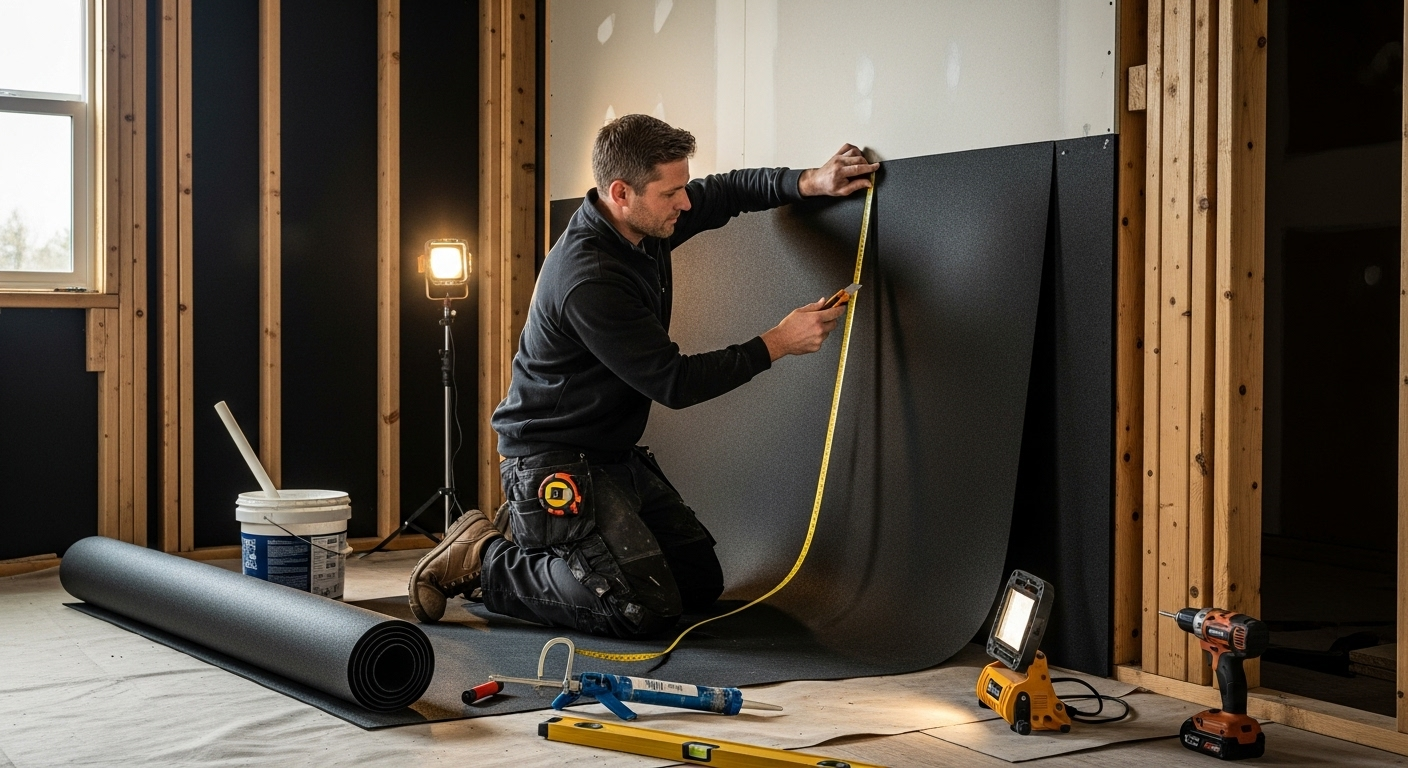
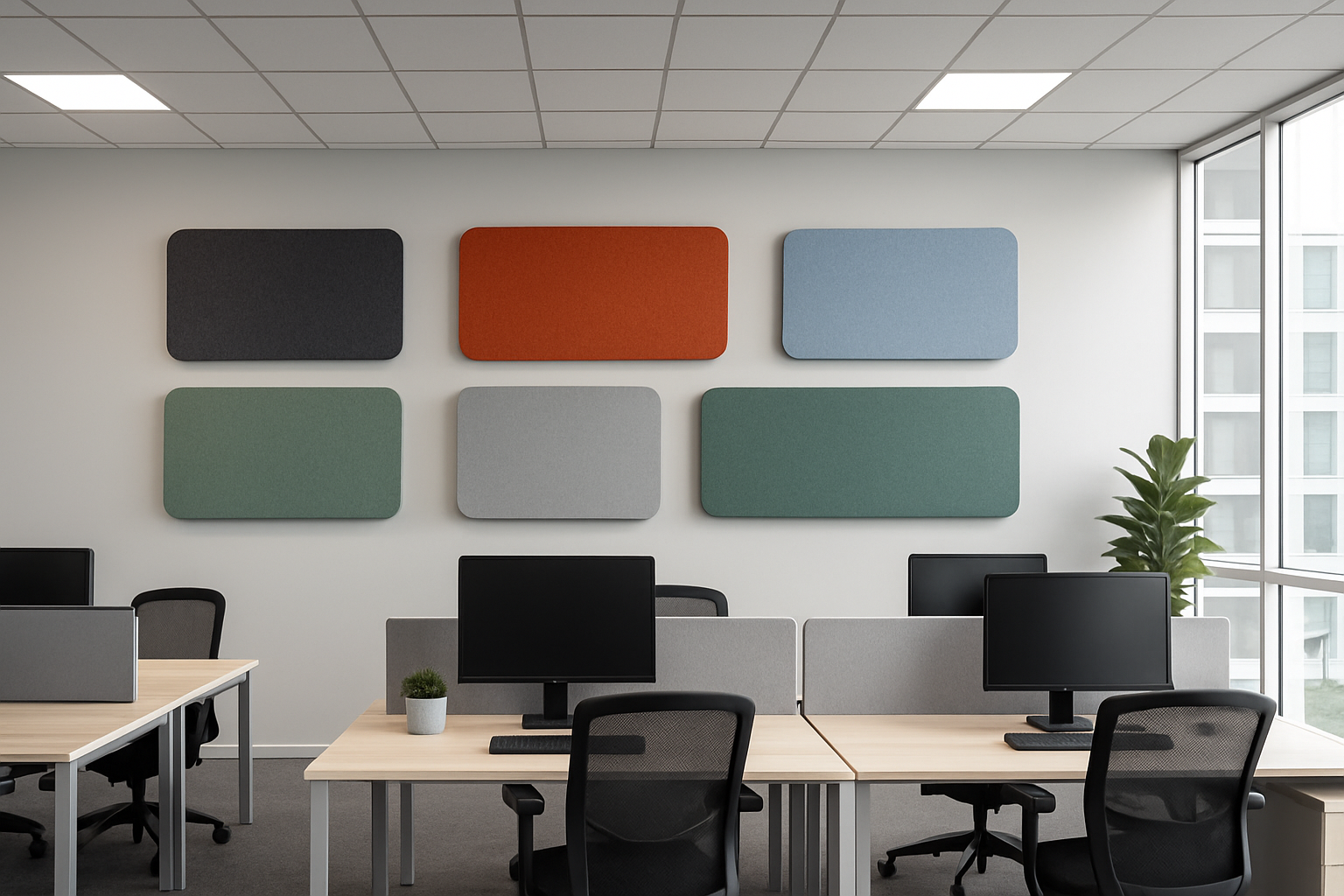
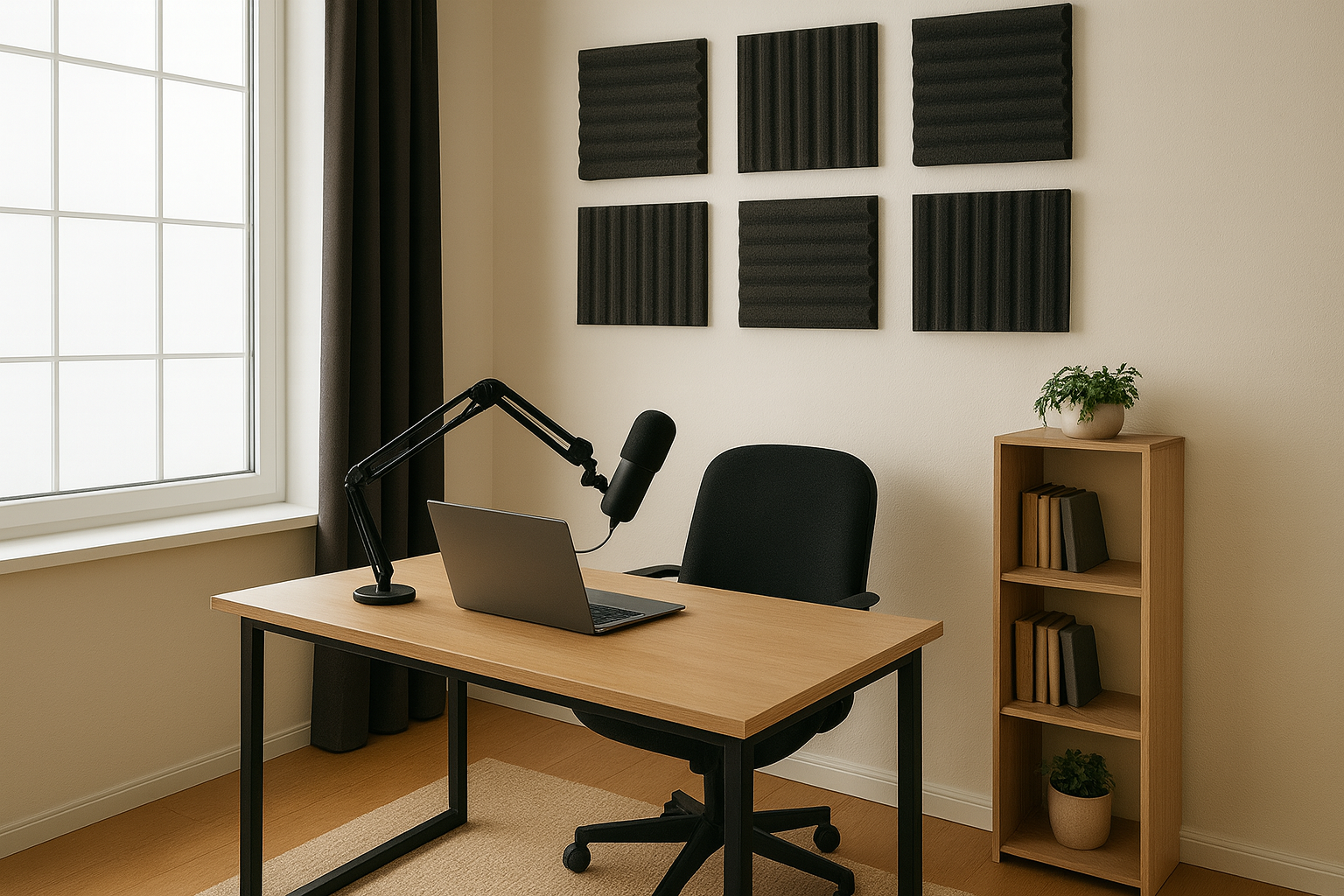
.png)